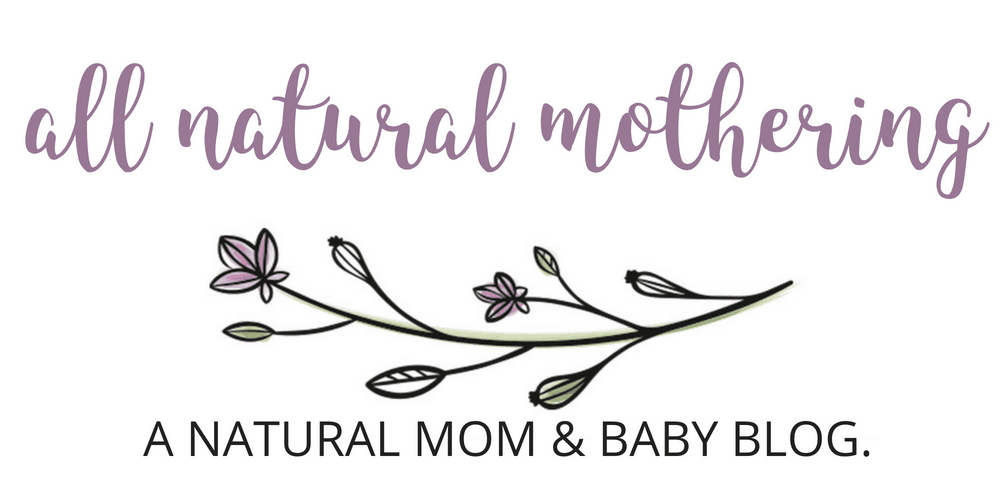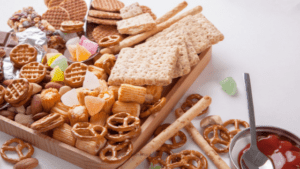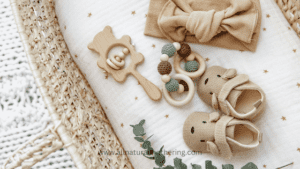Breastfeeding Positions Every Mama Needs to Know
Learning about all of the different breastfeeding positions, how to do them, and what breastfeeding positions to use in certain situations is so helpful for any new or expecting mama.
There are lots of different ways to feed your baby at the breast, and finding the position that is most comfortable for you and baby can make a big difference in your breastfeeding journey. Some breastfeeding positions are ideal for newborns, other can help babies with reflux, some can be done on the go, and others will be your go-to when your nipples are sore or when your breasts are clogged.
Knowing about different breastfeeding positions will make your breastfeeding experience a lot more positive. You?ll quickly find out which positions work best for you and your baby, while also having a variety of other options available to you no matter what life throws your way.
6 Most Common Breastfeeding Positions:
When it comes to nursing your baby, these are the six most common positions used by mamas around the world. Each comes with its own pros and cons like promoting a good latch, comfort for mama and baby, and ease of use on the go vs. at home.
Here you?ll find a short description of each of these positions and some advice on when to use the position. Later, we?ll talk more in depth about best time to use each position depending on your specific situation and needs. For example, which are best for newborns, large breasts, twins, etc.
Cradle hold
The cradle hold is likely what you picture in your mind when you picture a mother breastfeeding her baby. It often winds up being the go-to for many mamas once their nursing relationship is well established because it easy to do in almost any setting.
In the cradle hold, baby is lying on their side across your lap or supported by a pillow that brings them level to your breast. Your baby?s head will be cradled in the arm that is on the same side as the breast baby is nursing on.
Note that because your arm is supporting baby?s head, this position actually doesn?t give you a lot of control over positioning baby for a proper latch. This control can be essential in the early days and weeks. You can use the hand on the opposite arm to aid in this. Or switch to the cradle position after getting baby latched using the crossover hold (next on the list).
Crossover hold
The crossover hold, or cross-cradle hold, is the perfect position for newborns and new breastfeeding mamas because it gives you the best control over positioning baby?s head for a good latch. In the crossover hold, baby is lying on their side across your lap, but you are supporting baby?s head and body with a pillow and the opposite arm than the breast you are nursing on.
This allows you to aim baby?s head, nose and mouth toward your nipple and encourage a deep latch by mushing them onto your nipple as they tilt their head and open their mouth. Once baby is latched, you can continue nursing baby in the crossover hold, or gently switch to the cradle hold for the remainder of the feeding.
Football hold
In the football hold you will support baby?s head and body with the arm on the same side as the breast you are feeding them with. To visualize this hold, think about how someone holds a football tucked under their armpit against their side. This is where the name comes from.
Baby will be positioned against the side of your body with their head to your nipple and their body and feet wrapping around toward your side and back. This is an excellent position for newborns because it gives you great control over encouraging a good latch, and newborns like the snug positioning. Using a nursing pillow to support baby?s body in this position can make it easier.
Laid-back position
The laid back breastfeeding position, also known as biological nursing, is where you will lay on your back at an incline with your head and shoulders supported. Then, lay baby?s entire body on your stomach with their head positioned next to your breast. From here you allow their rooting instincts to help them latch onto the breast.
This position is another great one for the early days of nursing because it really promotes a deep latch and allows for skin-to-skin bonding.
Side-lying position
The side-lying position is where you and baby will lie on the bed or the floor with your bodies facing each other. To nurse lying down you will position baby?s nose towards your breast and allow their rooting instinct to help them tilt their head and open their mouth for a wide and deep latch.
This position is great when mama is tired and wants to rest her body while feeding baby, but can sometimes be tricky to accomplish successfully until baby is able to self-latch.
Upright breastfeeding, Saddle hold, Australian hold
These are all different names for what is essentially the same breastfeeding position. In upright breastfeeding you will have baby sitting on your lap, or straddling your leg, with their body facing you. Like in other positions, you will position baby?s nose to your nipple to encourage them to tilt their head back and open wide for a deep latch.
You can do this on a slight incline if baby cannot sit unassisted or doesn?t yet have good neck control. Upright breastfeeding is a great option for when baby is sick with a cold or ear infection, or is suffering from gas or reflux.
Breastfeeding positions for specific situations
Now that you have a basic description of the most common breastfeeding positions, let?s look more in depth at the best times to use these positions. Maybe you are here because of one of challenges listed below. Don?t let this discourage you from nursing! There is definitely a position that will make you and baby more comfortable.
Breastfeeding positions for twins
For mamas of twins, learning how to breastfeed both babies at once can save you a lot of time and help regulate your supply for two babies. While it won?t always be practical to nurse both babies at once, in the early days it?s a great option. One key to breastfeeding twins is proper support pillows, and maybe even an extra pair of hands until your babies are better at self-latching.
Here are the best breastfeeding positions for twins:
- Double cradle hold: Babies are lying with their feet touching at your belly button, supported by the arm of the side you are nursing on
- Double football hold: Babies are nursing with their heads towards each other, and their feet wrapping around either side of your body. You support your babies? heads with your hand and arm on the same side as the breast you are nursing on
- One football hold, one cradle hold: in this positioning, one baby?s feet will be at the other baby?s head
- Double upright breastfeeding: one baby nursing on each breast, sitting on your knee or lap
Best breastfeeding positions for newborn
When nursing your newborn, the most important thing to keep in mind is encouraging, supporting and helping them learn how to latch properly.
What does a good latch look like?
- They should have most of the areola in their mouth
- Their lips should be curled out
- Their chin should be against your breast
- Their nose should be free
To help baby get this latch, you will need to control their head and point their nose towards your nipple. Then, you will wait for them to tilt their head back and open their mouth in a rooting instinct. When this happens, you want to gently ?smash? their wide mouth onto your nipple. You may need to use your finger to gently splay their lips out around your breast.
What breastfeeding positions are best to achieve this?
- Crossover hold
- Football Hold
- Laid back/biological nursing
- Cradle hold, but be sure to use the opposite hand to help with latching
Breastfeeding positions for large breasts
Breastfeeding with large breasts can be difficult, especially in the beginning, because it can be hard to see baby and check for a good latch. But don?t be discouraged! You can totally master breastfeeding with large breasts.
Here are the positions to try:
- Football hold
- Cradle hold where you support your breast with the opposite hand by gently squeezing it into a slight flatter shape. This is known as a ?c-hold? of your breast because your hand makes a c-shape
- Side-lying hold can be more comfortable, and for mamas with large breasts may make it easier to help your baby latch even in the early days of nursing
Best breastfeeding position for sore nipples
If your nipples are sore during breastfeeding, it?s important that you reach out for help with baby?s latch. Some soreness is to be expected in the beginning, but a lactation consultant can help you correct baby?s latch faster and allow your nipples to heal.
However, even when your breasts are sore in the beginning it?s so important to keep nursing at the breast. The best breastfeeding position for sore nipples is going to vary significantly from mama to mama depending on where on the nipple your soreness is. There isn?t one position that will be best.
For this reason, I recommend trying to switch up positions to find the one that works best for you, always apply a nipple cream after feeding, and express a small amount of milk onto your nipple and rub it in to promote healing and comfort.
Breastfeeding positions for moms who had a C section
For C-section mamas it will be important to find breastfeeding positions that keep baby?s weight off of your incision. Having a good and supportive nursing pillow is especially helpful for C-section moms. You can also try using a belly support band to take some of the pressure off of your incision and make breastfeeding more comfortable.
As your body heals, you should use these positions:
- Football hold
- Cradle hold
- Side-lying position
Breastfeeding positions for babies with reflux
If your baby is suffering from reflux, positions where baby is upright or semi-upright are best because it aids in baby?s digestion. Think about anytime you may have had heartburn. It?s much more comfortable to stay upright or inclined after eating to prevent the reflux. The same is true for your baby. Additionally, try to keep your baby upright for 15-20 minutes after a feeding. Baby wearing can be perfect for achieving this.
What positions to try?
- Laid back position
- Upright positions
- Breastfeeding in a carrier
Breastfeeding positions to prevent gas
To prevent gas, you can use similar strategies to reflux. Nurse baby in an upright or semi-upright position. These positions will allow your baby to better control the flow of milk and air into their mouth. This is especially helpful if you have a forceful letdown or oversupply which can cause gas in your baby.
Breastfeeding positions for clogged milk ducts or mastitis
If you find yourself with a clogged milk duct, or full-blown mastitis, nursing baby is one of your best lines of dense to clearing the clog. One tip is to try to have baby?s chin against the clog. This might take some creativity of positioning on your part.
Another tip is to do a dangle feed, where baby lies on their back and you kneel on all fours and dangle your breast into their mouth. While not practical (at all) for everyday feeding, the gravity really helps clear clogs!
Other breastfeeding position tips
Well, mama, now you know the best and most common breastfeeding positions to use. In the beginning, it?s usually best to stick to positions that allow you to help baby to latch. But beyond that you will find the groove of positions that work best for you.
In addition to the tips in this article, I always recommend using a nursing pillow (especially in the beginning), having a great nipple cream on hand, and reaching out to an LC if you are having any issues, pain or doubts.
Happy nursing, mama!












